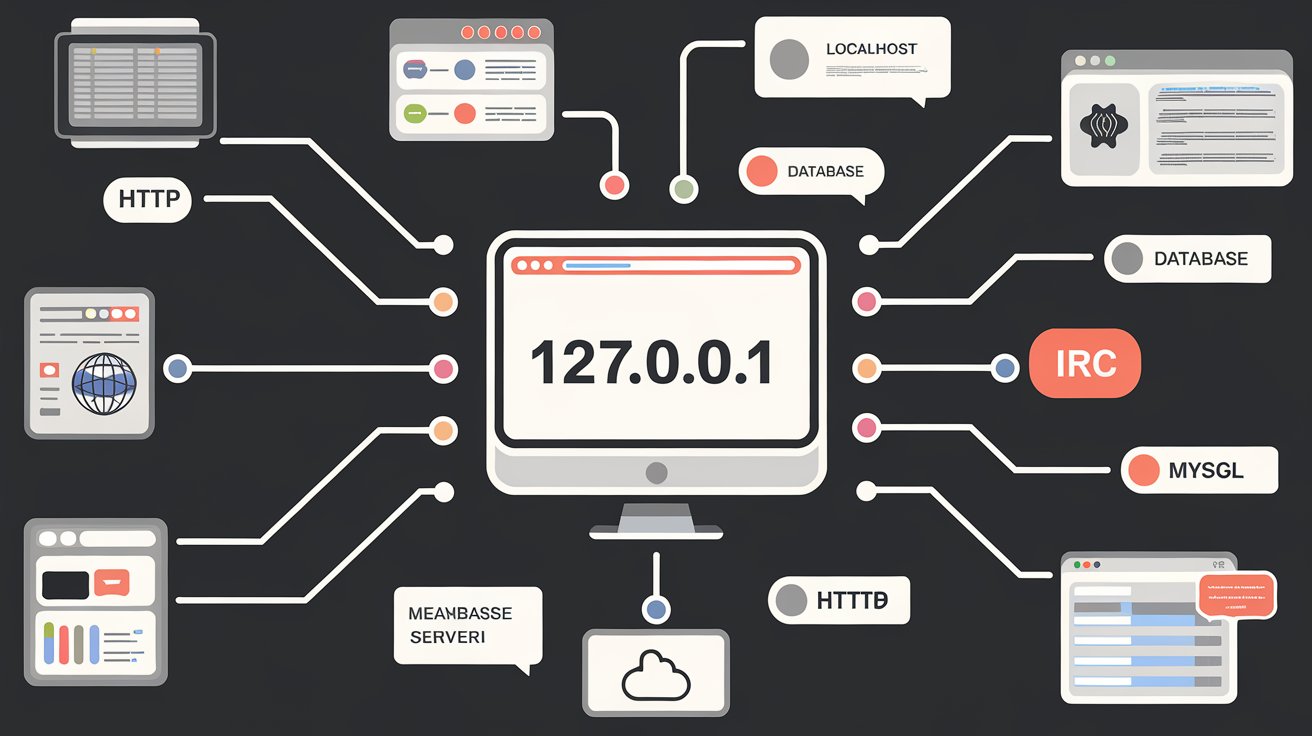
Specific IP addresses and port numbers are unique in networking and computer systems. One such combination, 127.0.0.1:62893, often appears in development, troubleshooting, or system diagnostics. While it may initially seem cryptic, understanding its meaning, purpose, and applications can offer valuable insights into the workings of modern computing.
What is 127.0.0.1:62893?
At its core, 127.0.0.1:62893 combines an IP address and a port number. To fully comprehend its role, let’s break it down:
The Loopback Address: 127.0.0.1
The IP address 127.0.0.1 is referred to as the “loopback address.” This address always points to the local machine. It’s a mechanism that allows your computer to send network requests to itself. This feature is invaluable for testing, development, and internal communications.
The Port Number: 62893
Port 62893 is dynamic. Unlike well-known ports like 80 (HTTP) or 443 (HTTPS), dynamic ports are used temporarily by operating systems or applications. These ports facilitate communication between services without being tied to specific, standardized functions.
When combined, 127.0.0.1:62893 specifies a local service running on your computer at port 62893.
Applications of 127.0.0.1:62893
127.0.0.1:62893 is diverse, primarily revolving around local development and internal communication. Here are the most common scenarios where this address and port combination appears:
- Local Development Servers
Developers often rely on local servers to test applications before deploying them to production environments. Frameworks like Node.js, Django, or Flask enable developers to spin up local servers, often assigning random dynamic ports like 62893. Accessing 127.0.1:62893 in a browser might reveal a locally hosted application under development.
- Debugging and Testing
For debugging, developers and testers use 127.0.0.1:62893 to identify issues in applications. It allows safe experimentation without exposing the application to external networks. Tools like Postman or browser developer consoles make inspecting traffic to and from this address straightforward.
- Internal Application Communication
Specific software solutions utilize dynamic ports such as 62893 for internal communications. For instance, database servers, message brokers, or other backend services might temporarily bind to 127.0.0.1:62893 for inter-process communication.
Troubleshooting 127.0.0.1:62893
While 127.0.0.1:62893 is typically harmless, encountering issues related to it can disrupt workflows. Here’s how to address common problems:
- Check for Port Conflicts
Dynamic ports like 62893 clash if multiple applications attempt to use the same port simultaneously. Tools such as netstat or lsof can identify which process occupies the port.
- Review Firewall Settings
Firewall configurations might block traffic to or from 127.0.0.1:62893. Ensuring that local traffic is permitted can resolve access issues.
- Restart the Service
If an application tied to 127.0.0.1:62893 isn’t functioning, restarting the associated service or application often resolves temporary glitches.
- Inspect Logs and Documentation
Most modern applications generate logs detailing errors or warnings. These logs often explain why 127.0.0.1:62893 is being used or causing issues. Consulting application documentation also offers tailored troubleshooting advice.
Why is 127.0.0.1:62893 Important?
The importance of 127.0.0.1:62893 lies in its role as a versatile tool for development, testing, and internal networking. Its flexibility allows developers to simulate real-world scenarios, debug applications efficiently, and ensure seamless communication within systems. While it’s easy to overlook this combination as a mundane detail, it plays a pivotal role in maintaining robust software ecosystems.
Best Practices for Working with 127.0.0.1:62893
To maximize the benefits of using 127.0.0.1:62893, follow these best practices:
- Monitor Port Usage
Dynamic ports can change frequently. Use tools to monitor and document port usage during development to avoid conflicts.
- Secure Local Traffic
Even though 127.0.0.1:62893 operates locally, ensure sensitive data transmitted across this address remains encrypted or secured.
- Optimize Configurations
Customize application configurations to effectively utilize ports like 62893. Adjust default settings when necessary to align with system requirements.
- Regular Maintenance
Periodic system checks, such as reviewing open ports and active connections, help maintain a clean and efficient development environment.
Conclusion
Understanding 127.0.0.1:62893 transforms it from an obscure technical term into a powerful tool in the developer’s arsenal. It represents the dynamic intersection of local networking, development processes, and internal communications. By effectively leveraging this combination, professionals can create, test, and deploy applications with greater efficiency and confidence.
For anyone working in networking or software development, grasping the significance of 127.0.0.1:62893 is beneficial and essential.















